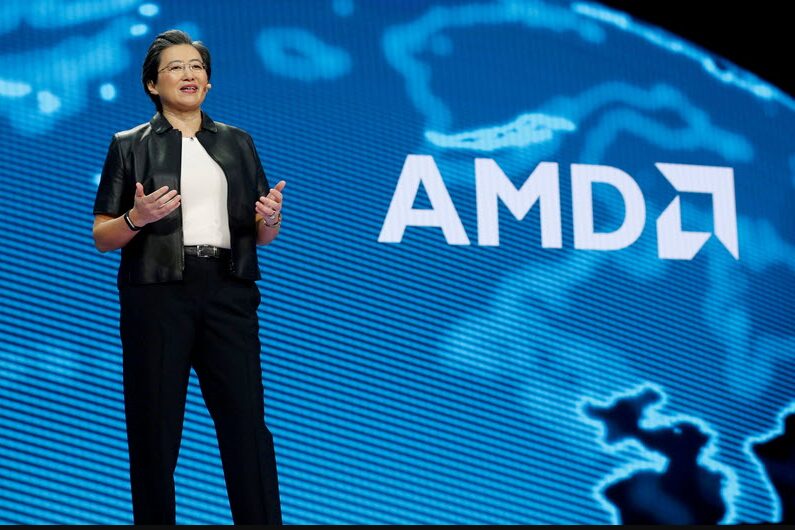AMD’s AI investment comes as a bold move, with the chipmaker taking aim at Nvidia’s stronghold in the growing AI market. Just recently, the company finalized its massive $4.9 billion acquisition of ZT Systems, which shows AMD’s determination to expand its AI chip capabilities amid the ever-increasing demand for AI computing power.
In a recent interview, Lisa Su, AMD CEO, was clear about the fact that “the need for compute continues to be immense”. The company is going to continue to invest strongly in this area because she thinks this is the single most important technology.
Also Read: Who Are The 10 Richest People In Crypto?
AMD’s AI Expansion: Can It Compete with Nvidia’s Market Power?


Strategic Acquisition
The substantial $4.9 billion ZT Systems deal, which was initially announced back in August 2024, is expected to strengthen AMD’s position in the hyperscaler market. Right now, ZT Systems counts Microsoft among its key customers, potentially giving AMD AI chips better access to major cloud providers and their massive infrastructure needs. Based on current projections, AMD expects this significant investment to positively impact its non-GAAP results by late 2025.
When discussing the current state of AI and addressing market concerns, Su explained:
“I want to be really clear about this. There is no question we are in the very early innings of AI now — to put some of the noise aside.”
Market Challenges
Despite AMD’s ambitious AI investment plans, the company is actually facing some pretty significant headwinds at the moment. AMD’s stock has dropped about 15% year-to-date, which is noticeably underperforming compared to the S&P 500’s 5% decline during the same period. Also, their first quarter guidance from early February projects that sales will decrease by approximately 7% sequentially, with both data center and PC chip sales expected to trend lower in the near term.
Also Read: Mastercard’s Blockchain Bet: A Venmo-Like Crypto Revolution
Industry Analysis
J.P. Morgan analyst Harlan Sur, who currently maintains a Neutral rating on AMD stock, mentioned:
“Although AMD has improved its competitiveness across CPU and GPU products with Ryzen, EPYC, and Radeon platforms and is on track to improve its market share and drive meaningful revenue growth in the near term, we believe long-term share gains are less certain. AMD will have to invest heavily in operating expense (especially R&D) in order to keep pace with the market leaders.”
This detailed analysis certainly highlights the ongoing challenges AMD faces in the competitive AI infrastructure market, where Nvidia still maintains a pretty dominant market share.
Future Outlook
Despite some short-term obstacles, Su remains quite optimistic about AMD’s AI investment potential and future growth opportunities. In the same interview, she added:
“We continue to see more applications, more capability. Enterprises are just at the very early innings of adoption. And frankly, they need more help from folks like ourselves.”
Nvidia Competition
Nvidia’s dominance in AI chips is being directly challenged by AMD’s strategic investments and recent acquisitions. While Nvidia currently leads the sector with its popular GPUs and dedicated AI accelerators, AMD’s focused approach aims to capture additional market share through strategic partnerships with major tech companies and enhanced product offerings.
Also Read: Tether Buys $750M Worth of Bitcoin in Q1 2025
Any AMD stock forecast now needs to consider the company’s significant pivot toward AI computing and infrastructure. Wall Street analysts will be closely monitoring how effectively the ZT Systems acquisition strengthens AMD’s competitive position against Nvidia’s well-established presence in the coming months.
As AMD commits nearly $5 billion to AI infrastructure, the entire tech industry watches with great interest to see if this substantial AMD AI investment will actually help narrow the gap with Nvidia or if additional investments and more time will be needed before AMD can truly challenge the current AI chip leader’s market dominance.





